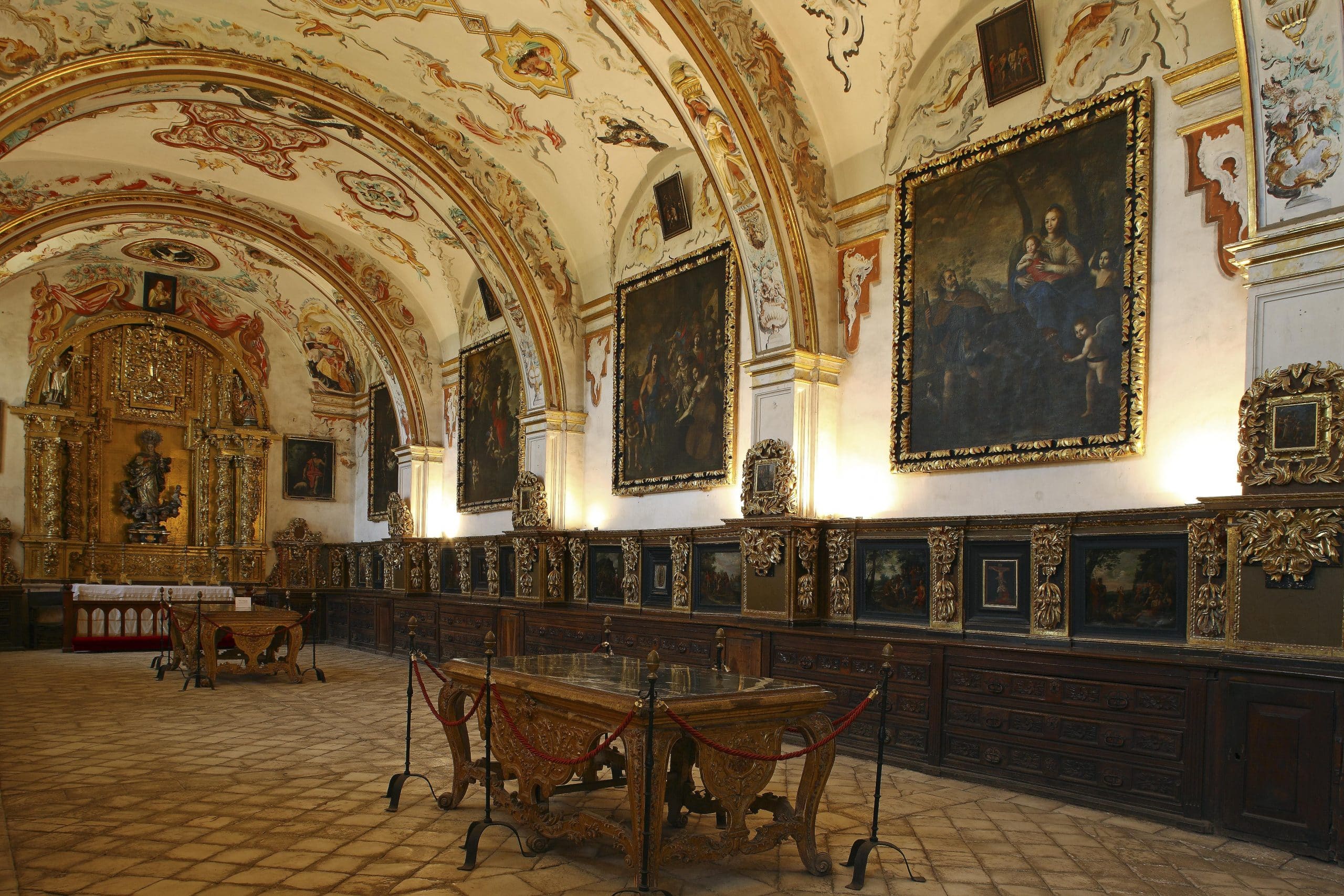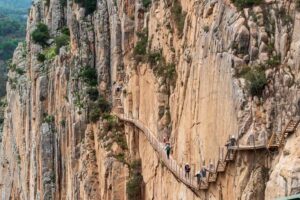The Monasteries of Suso y yuso of San Millán de la Cogolla were declared Heritage by UNESCO on December 4, 1997.
They are located in the municipality of San Millán de la Cogolla, in the province of Logroño (La Rioja). The name of the municipality honors the founder of the Suso Monastery (Millán or Emiliano de Berceo), born in the town of Berceo in the year 473. In his youth he devoted himself to shepherd, to later dedicate himself entirely to a hermit life in a cave, which was the seed, through the centuries, of what is now the Yuso Monastery, where he died and was buried in 574.
Both monasteries (Suso “the one above” and Yuso “the one below”), are located 2 km away from each other and are known as “Monastery of San Millan de la Cogolla”.
In the Monastery of Suso, we can see the different architectural styles reflected, from the XNUMXth to the XNUMXth century (Visigothic, Mozarabic and Romanesque, successively). From the Mozarabic period, we highlight the horseshoe arches and from the Romanesque period, the tomb of the Saint from the XNUMXth century.
In this same cave, we find what could be the oldest altar in Spain, an artificial hollow, formed by three hollows, each one with a semicircular arch, and which served as an altar and tabernacle for Saint Millán.

The true importance of the Suso Monastery and for what is internationally known, is for being the Cradle of the Spanish Language. Due to the fact that the first words written in Spanish and Basque were written in it, and that they appear in the Glosas Emilianenses (Emilianense Codex 60), where a monk in a codex written in Latin, takes notes to understand the grammar and clarify the meanings in the speech of the people, in romance, and can boast of being the first page of Spanish literature.
On the right margin, from folio 72r of the Emilianense codex 60, we read this doxology:
“Atorial cone of our owner owner Christo, owner Salbatore; Which owner got the honor and which owner has the mandate Patre cone Spiritu Sancto cone in the siecles of the siecles, facamus Deus Omnipotes such a serbite fere ke the ela face gaudioso segamus.
Which translated into Castilian would be: Amen ”(With the mediation of our Lord, Don Cristo, Don Salvador, who shares the honor and hierarchy with the Father and with the Holy Spirit for ever and ever, may Almighty God make us serve as such that we are happy in his presence. Amen.)
And in Basque it appears in this codex: izioqui duguguec aiutuezdugu ”(We have been sheltered, we have been saved, we have not been given help)
Likewise, in Suso, among other works, the Emilianense Codex of the Councils, the Quiso Bible, and the Emilianese Codex of the Councils were written, making it one of the main cultural centers for the expansion of the culture of the Middle Ages.
In this Monastery of Suso he professed, as a monk, the one who considers himself the first Castilian poet: Gonzalo de Berceo (XI century) who, among other works, wrote the Life of San Millán and Santo Domingo de Silos.
Due to its proximity to French Way of Santiago, between the towns of Nájera and Santo Domingo de la Calzada with its famous legend of the chickenMany pilgrims, mainly in the XNUMXth-XNUMXth centuries, came to the Monastery to visit the remains of the Saint.
Due to the growth of the monastic community and the importance of it, the monks moved, in the middle of the XNUMXth century, to the valley, to what is now the Yuso Monastery. There is no remnant of the original Romanesque church and the monastery that we can see today It is the result of the different works carried out in the XNUMXth, XNUMXth and XNUMXth centuries (Baroque and Renaissance styles).

The architectural, sculptural and ornamental elements that stand out in this monastery are the cloister (year 1549), the church (1676th century), the grate (year 8), a walnut pulpit (XNUMXth century) and the trascoló (set of XNUMX splendid sculptures)
Of special interest, it is necessary to review the spectacular library (10.000th century) and archive, which contains about 1595 copies, the most important being two cartularies (Galicano and Bulario) and the Evangelario by Jerónimo Nadal, printed in Antwerp in XNUMX.
In the Museum of the Monastery of Yuso there are some works of art of extraordinary value such as the reliquary coffers of San Millan (22th century) and that of San Felices (1809th century). The original San Millán chest was made of wood with details of precious stones and gold and lined with XNUMX ivory plates, representing scenes from the life of the Saint. During the Napoleonic invasion (XNUMX), different elements of it were stolen, as well as the loss of some ivory plates, some of which are exposed in different museums, such as the Metropolitan of New York or the Hermitage of Saint Petersburg .
Currently, in the Yuso Monastery there is a new box made in 1944 where the preserved reliefs have been placed, while the lost ones have been reproduced in metal. If you want to visit Monasteries of Suso and Yuso we recommend a trip to the Camino de Santiago organized between the cities of Logroño and Burgos and spend an extra night in Nájera to organize a roundtrip excursion.
If you don’t have enough days, and your main desire is to get to Santiago and give a hug to the Apostle Santiago, we recommend you start with the Camino de Santiago from Sarria organized. Many pilgrims, once they have arrived at the Cathedral for the first time, get hooked, and later dedicate sections of one week a year to complete the entire French Way.









